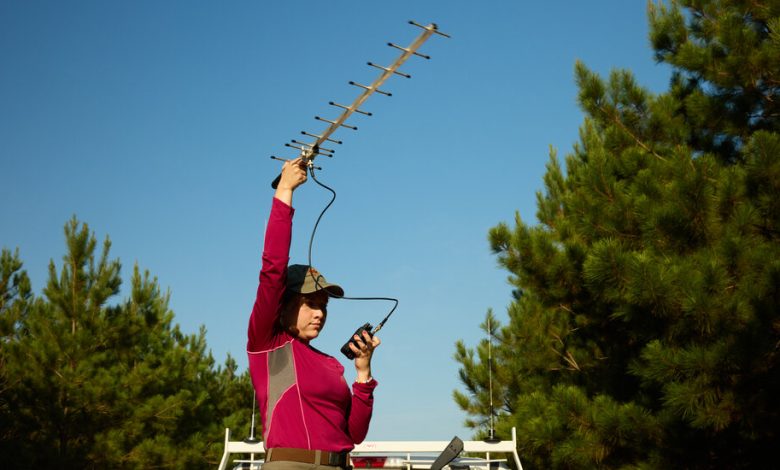Turkeys Were a Marvel of Conservation. Now Their Numbers Are Dwindling.

When researchers started trapping and putting radio trackers on female turkeys in the thick woods of southeast Oklahoma, they hoped to learn how hens were successfully raising their young.
Two years into that study, there is a complication: None of those 60 or so turkeys are known to have hatched offspring that lived more than a few weeks, a microcosm of a much larger problem.
Wild turkeys were a 20th-century conservation triumph. After the birds dwindled or vanished across much of their ancestral range, decades of work helped re-establish healthy populations. As they multiplied, turkeys became a favorite target for hunters and a frequent sight along roadways, spreading beyond the countryside and into suburban yards, city parks and college campuses.
But over the last 10 or 15 years, wild turkeys have fallen into significant decline throughout the South and Midwest. As it became clear that there were sustained losses across many states, turkey enthusiasts grew worried, scientists started studies and some states curbed hunting. Just this year, Kansas and Mississippi suspended fall turkey hunting seasons, and Oklahoma legislators held a hearing on the decline.
“It took a decade or more of this happening in multiple places where everyone was like, ‘Holy crap, what’s going on?’” said Colter Chitwood, a professor at Oklahoma State University who is leading the study into turkey declines in that state.
Found only in North America, turkeys have long held a special place in America’s imagination. Bulky, colorful and delicious, they became the centerpiece of a national holiday, an important sector of American agriculture and even the mascot of a few proud sports teams.
“When you look back at what was done to restore turkeys and to establish wild turkeys, and where they’re at today, it was probably one of the greatest conservation success stories ever within the U.S.,” said Mark Hatfield, who has worked to quantify population trends as the national director of conservation services at the National Wild Turkey Federation, a nonprofit group focused on habitat preservation and hunters’ rights.
Wild turkeys remain more common than they were several decades ago. But the speed, scale and breadth of recent declines have raised alarms. It is not quite time for existential panic, scientists said, but it is a puzzling moment.
“Where are we at today?” Mr. Hatfield asked. “I’d say we’re at an inflection point.”
Tallying wild turkeys (which are distinct from the farmed ones that end up on most Thanksgiving plates) is a bit like counting cars in downtown traffic: You can tell the general trend line, but good luck getting an exact number. Researchers estimate that the population has fallen by at least 30 percent from peak levels in several states, even as turkey numbers appear stable or growing elsewhere, including parts of the West and Northeast.
In Kansas, a state that became a destination for turkey hunters in the 1990s and 2000s, officials once received complaints about huge numbers of turkeys causing damage to cropland. Now it is more common to hear concerns about the conspicuous drop-off in turkey numbers.
That decline, about 60 percent in Kansas since 2007, has forced conservation officials to revisit long-held beliefs about turkeys, said Kent Fricke, a small game biologist in the state’s Department of Wildlife and Parks.
“We just assumed that turkeys — being very generalist, very adaptable — that they would adapt or just find the conditions to have high production,” Mr. Fricke said.
While awaiting research results that may provide some answers, Kansas officials called off the fall hunting season, reduced the number of turkeys that hunters can shoot in the spring and placed limits on out-of-state hunting permits.
Turkey declines have touched off a new wave of gobbler research. Across the country — including in Georgia, Kentucky, Missouri and Tennessee — scientists are tracking turkeys, hoping to learn why they are in decline and what might fix it. Even in states like Pennsylvania, where turkey numbers are relatively stable, state officials are studying their numbers and watching for lessons from other places.
“Because this is a passionate, passionate group from multiple facets, we really have rallied to try to increase the level of work that’s being done,” said Marcus Lashley, a wildlife ecologist and professor at the University of Florida who co-hosts a podcast, “Wild Turkey Science,” that examines issues like the relationship between hardwood forests and turkeys, the best cover for turkey brooding and nest survival rates.
Despite the volume of work underway, there are few definitive answers about the declines so far. For now, theories abound. Many suspect a reduction in the types of habitat conducive to turkey nesting might be driving the losses. Others are looking into changes in the habits of predators, the role of disease or the impact of weather extremes made more common by climate change. There is general agreement that there is not just one reason, and that the specifics might vary from place to place.
“It’s kind of like a death by 1,000 cuts,” said Andrew Little, a professor of landscape and habitat management at the University of Nebraska-Lincoln who is studying turkey trends in that state, where the bird population has declined about 45 percent since 2009. “There’s a lot of different things, and there are a lot of different factors.”
Understanding those factors is difficult, painstaking work that plays out in places like Idabel, Okla., where two Oklahoma State graduate students piled into a heavy-duty pickup on a recent weekend and began crisscrossing country roads where the smell of pine lingered in the air. The students, Nicolle De Filippo and Cyrena Bedoian, were working with Dr. Chitwood on a study of turkeys in Oklahoma’s forested southeast.
For two winters, Oklahoma researchers had tracked down female birds, trapped them and attached radio transmitters to follow their life cycle and their success raising offspring, known as poults. The researchers monitored nesting locations and a few successful hatches, only to learn the poults soon perished.
Still, they kept coming back to track the turkeys’ movements, hoping to learn more as another nesting season approached. If they got within a few hundred yards and picked up a radio signal, they would be able to download key data without disturbing the animals. That information could help explain why turkeys’ numbers are dwindling.
But one hot late-summer morning, the winged subjects of their study were not cooperating.
“They’re definitely a mysterious bird,” Ms. De Filippo said. “They never do what you expect them to do.”
As the students plugged different frequencies into their radio, hoping to find turkeys, they were greeted with static buzz. Pressing through one patch of woodland, they thought they picked up a faint beep, prompting them to get out of the truck and search for more beeps. No luck.
A few miles away, just across the Arkansas state line on a road where angry dogs barked outside one of the few houses, they picked up another bird’s signal.
“Is that her again?” Ms. Bedoian asked as they crept along, ears straining to pick up a beep. “I think I know where she is,” Ms. De Filippo responded as they zeroed in on a tree line across a verdant pasture.
Soon, the signal grew stronger and the data began to transfer. There was a turkey in the woods.



